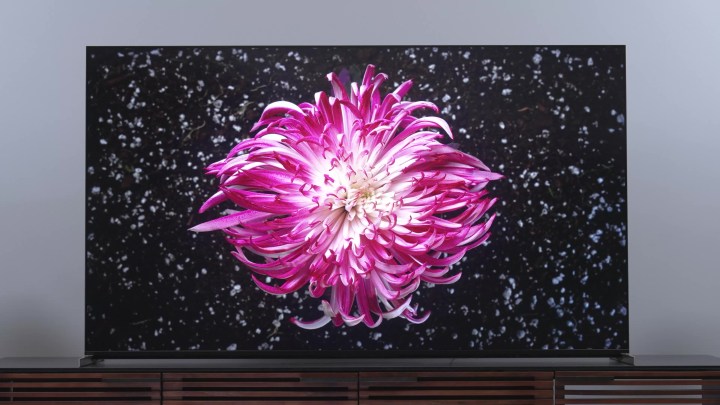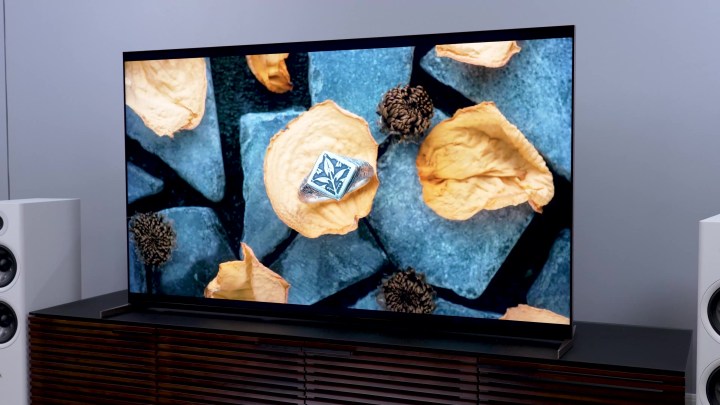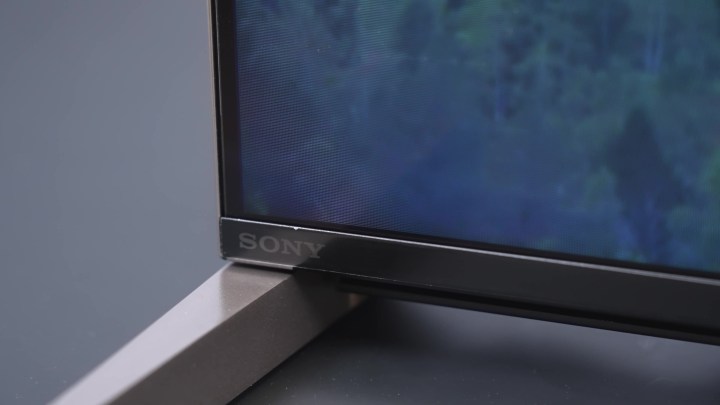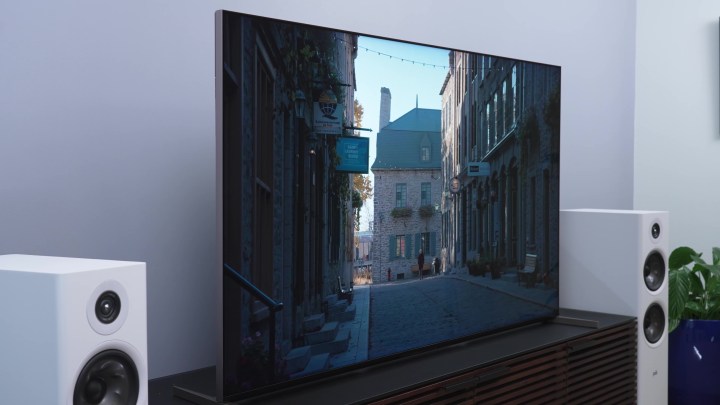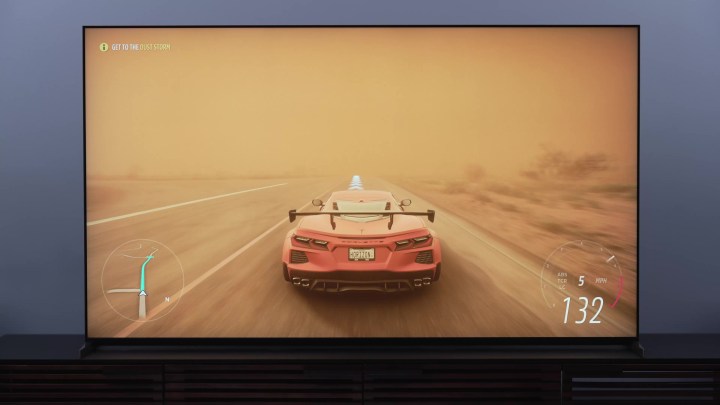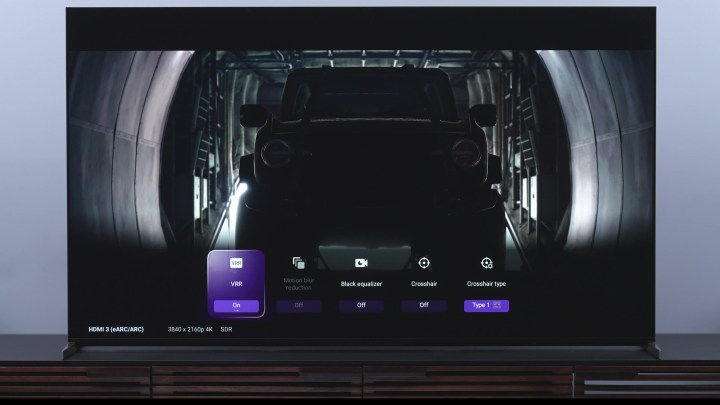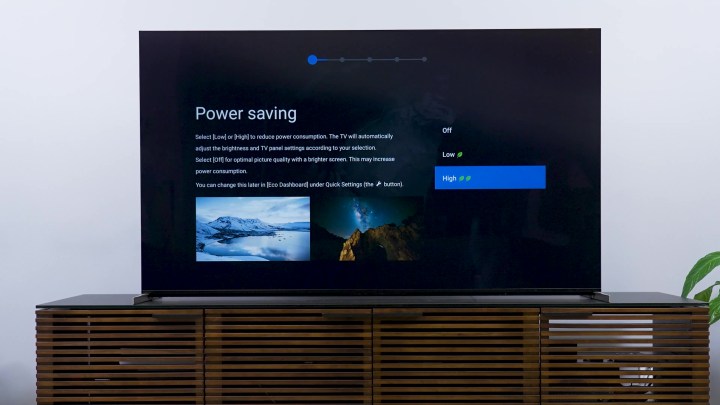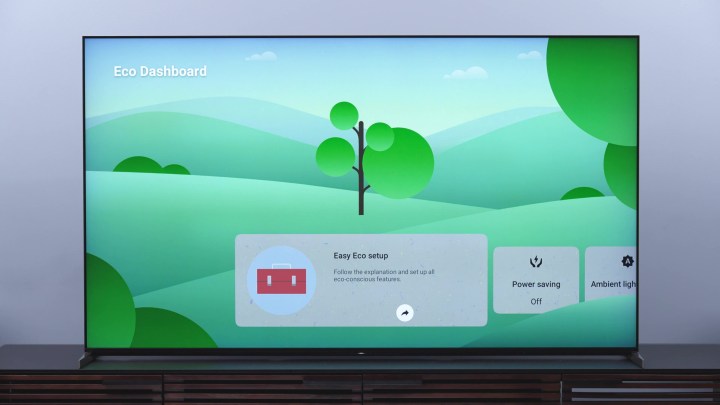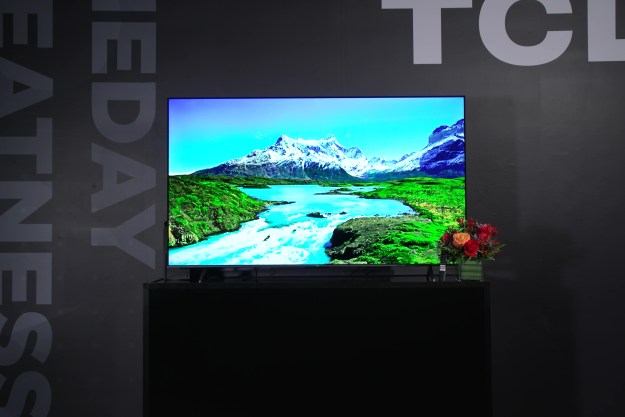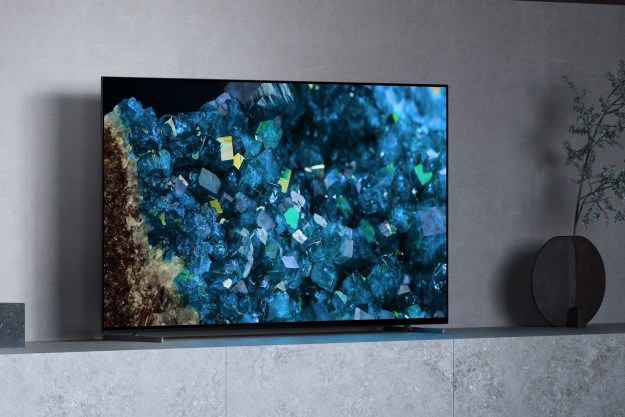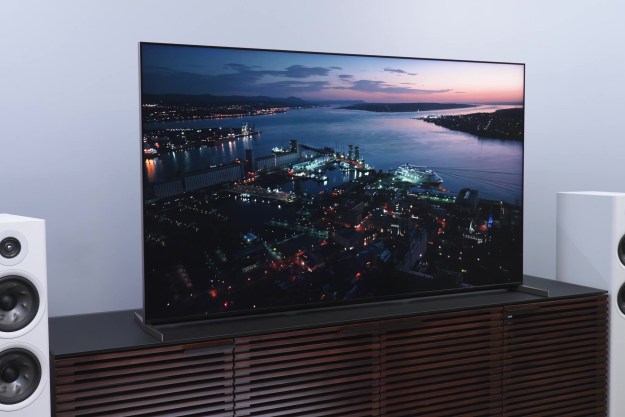
- Excellent motion resolution
- Stellar color accuracy
- Bright, punchy HDR performance
- Solid black levels
- Some backlight blooming/halo
- Poor off-angle performance
I want to start my review with an admission of guilt. I am guilty of going into this review having prejudged this TV. To be fair, though, I feel like I had good reason.
The X93L looks exactly like last year’s X95K — which was Sony’s flagship mini-LED TV. Let’s set aside the confusion of the model number convention for just a moment and, for now, work off this idea that the X93L is just a rebadged TV from 2022 and that Sony has presented nothing new in terms of hardware with this TV. If that’s what you have rolling around in your head when considering this TV, it’s hard not to think that maybe you’re being cheated. It’s a new year, you want a new Sony TV — not last year’s Sony TV, right?
Here’s the thing, though: We should not sleep on the X93L.
Video review
Series and size details
While we reviewed the 65-inch XR65X93L model, our review also applies to the 75-inch, and 85-inch models in the Sony BRAVIA XR X93L Series.
| Screen Size | Model Number | MSRP |
| 65-inch | XR65X93L | $2,200 |
| 75-inch | XR75X93L | $3,000 |
| 85-inch | XR85X93L | $4,400 |
Everything (not so) old is new again
So similar are the X93L and the X95K that I asked Sony point blank: Tell me how this is not an X95K with a new model number. And to Sony’s credit, it didn’t mince words. It mentioned three new software features, and it justifiably pointed to the fact that the X95K was and is an outstanding TV.
So, I carried on, unboxed the TV, and started evaluating it. After measuring the TV’s key picture quality attributes using Calman software and a calibrated Spectracal C6 colorimeter, I set about sitting down to just enjoy the X93L while revisiting The Matrix and a smattering of Marvel superhero movie clips. As I did, I thought, yeah, this is a gorgeous TV. It holds up today in terms of performance. In fact, I found myself wondering why the X95K didn’t stand out in my memory more after watching content on the X93.
That thought led me to make price comparisons to other 2023 models. And it was then that I realized that what the X93L here really has going for it is its lower price compared to what the X95K cost when it came out.
Yeah, the price. A Sony TV’s price is the difference-maker? I didn’t see that coming either. We spend so much time talking about the Sony tax, right?
If we look at overall performance for the price, the Sony X93L is looking like a super-smart choice!
The X93L is significantly less expensive than the X95K was when it first came out. The 65-inch X95K was $2,800 at launch. The 65-inch X93L is $2,200 at launch. That’s $600 lower! And the price difference as you move up in size only gets more significant.
Now, let’s look at the competition. The 65-inch Samsung QN90C, also a mini-LED backlit TV, is $300 more at $2,500. The LG QNED99 — which admittedly I haven’t seen since CES, but which left a great impression — is also $300 more at $2,500.
Now, granted, the Sony X93L only has two HDMI 2.1 inputs, whereas the Samsung and LG models have four, an aspect that may concern gamers with multiple latest-gen consoles and high-end gaming PCs. But if we look at overall performance for the price, the Sony X93L is looking like a super-smart choice.

The X93L’s price comes in well under 2023 OLED TVs of the same size, and just under competing mini-LED sets from Samsung and LG.
Now, we could toss the TCL QM8 and Hisense U8K in the mix — both of which are seriously undercutting all of the competition. But there are trade-offs to be had with those models. For example: Neither the QM8 nor the U8K’s motion resolution is quite as good as the Sony X93L’s.
So, if you want a bright, punchy mini-LED TV with Sony’s outstanding motion, color resolution, and HDR tone mapping, the X93 is looking like a pretty awesome deal.
Brightness, color, and white balance
I’m getting ahead of myself. I’m going to assume you know nothing about the X95K and dig into the measurements I got when testing the X93L in a little deep dive I like to call “Numbers for Nit Nerds.”
Here’s the rundown:
I tested the X93L at first with iMax Enhanced mode, but later in the Custom preset, which offered slightly better accuracy out of the box. The pre-calibrated SDR settings were pretty impressive. The two-point white balance had errors under a Delta E of 3, but two ticks off the blue gain and blue bias pretty much zeroed out the errors entirely. The SDR peak brightness came in around 350 nits, which is a little high for standard, but more in line with what most folks will need and want, so I think that’s a smart setting. Color was quite accurate, with Calman showing an average Delta E of 4.2, — keep in mind an error of three or lower is imperceivable to the human eye. Thus, I’d characterize the X93L in the great-to-excellent camp for out-of-box performance.
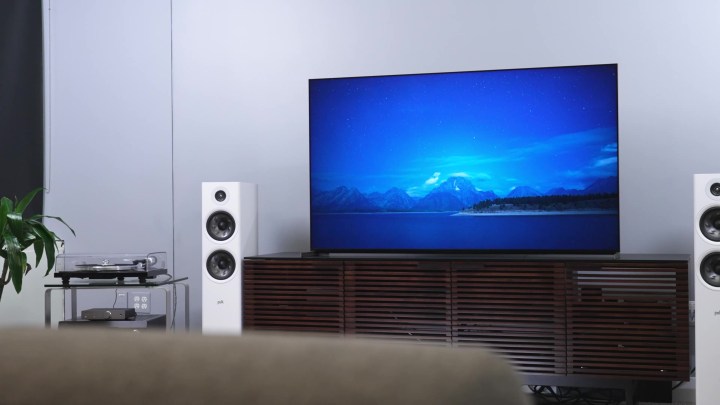
HDR showed a peak brightness of 1,800 nits from a 10% window and just shy of 1,000 nits full field white. Color accuracy here was excellent, with an average delta E of 1.92, so no perceivable errors other than two oddball colors. The X93L produced 93% of the UHDA P3 color gamut and just over 73% of the BT.2020 color space.
In other words, exactly like the Sony X95K from last year.
Backlight control
So, based on those measurement points, the X93L does look a lot like the X95K. What matters most to me, though, is how well this TV handles backlight control, and I don’t expect it to be any better or worse than last year’s X95K.
And, it isn’t. It’s about the same. The only way Sony can improve the backlight performance on this TV is to just add a bunch more mini-LED backlights and break them down into significantly more zones. And it has done that, with the X95L, a more expensive TV that’s Sony’s new flagship, and it is only available in an 85-inch model. So, if you want the ultimate in mini-LED backlight performance from Sony, it comes in the X95L.
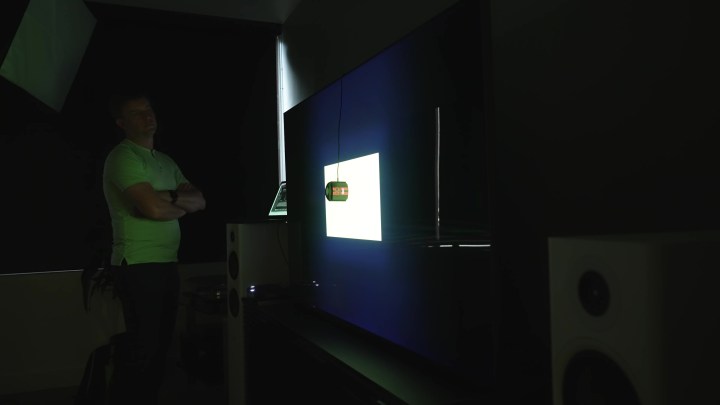
For the X93L’s part, Sony has opted not to add a bunch of cost, but rather bring the price down on this TV. I suspect that Sony believes that 9.6 out of 10 customers will be thrilled with this TV’s backlight performance and that the folks — video enthusiasts like many of us — who want better will either spend the money on an OLED or go for the X95L.
Frankly, that seems like a smart business decision. It is likely to get more Sony TVs into more homes. But what you’ll get from this TV is excellent HDR highlights at the cost of a modicum of blooming. In darker scenes that have bright highlights, you can spot some blooming or halo effect around the bright objects in areas that should be dark. An OLED TV-killer this is not. With the mini-LED backlight and zone count this TV has, Sony could favor black levels and reduced blooming at the expense of highlight intensity, but it judged — I think correctly — that the bright highlights would have a more impressive impact.
So, what’s new?
With its stellar motion processing and low-resolution content upscaling, excellent tone-mapping, and color accuracy, this is absolutely a premium TV with all the markings of a Sony. What’s new for this TV this year is an Eco Dashboard that makes it easy to manage eco settings, with an eco settings prompt in the setup phase that lets you disable it right off the bat for the best performance, and a new gaming dashboard that lets you turn VRR on and off, toggling between VRR and 60Hz or 120Hz, depending on the game.
There also is black-frame insertion available when VRR is off, if you want reduced motion blur. Local dimming is active in VRR mode, but you can’t have VRR and BFI at the same time — that just isn’t doable when you’re backlight blinking. There’s also a black level adjustment here so it’s easier to see in the dark scenes and a crosshair option that you can use if you don’t like your game’s crosshair. You can change the style and the color as well.
Another feature rolling out in a future firmware update is the ability to change the screen resolution (effectively reducing the size of the screen). So if you want to size down the screen and sit closer to the display, you can do that, but it will alter the resolution of the image. It’s sort of like going from 2x display apps on an iPad to a 1x app.
At this point, the question that’s left is how does the X93L compare to the Samsung QN90C? And, if the TCL QM8 and Hisense U8K offer even brighter highlights with less blooming — as I suspect they may — then what, if anything, must you give up by choosing those models over the X93L here?
We’ll know more as I will be reviewing those very models next. But what I can say about the Sony X93L now is that it’s an excellent TV with premium performance, the likes of which you just won’t get from other TVs. Of that, there is no question. The question is, though, does the X93L offer you what you are looking for? If four HDMI inputs are what you need, then perhaps the X93L isn’t the right choice for you. But if you want a mini-LED TV that is absolutely gorgeous to watch — one that is bright, vivid, rich, and more accurately duplicates creators’ intent than just about any other mini-LED LCD TV on the market — then the X93L is an excellent choice.
Editors' Recommendations
- Sony debuts the Bravia 9, its brightest 4K TV ever, alongside new 2024 models
- TCL’s giant 115-inch QM89 is the world’s largest 4K mini-LED TV
- Hisense just debuted the world’s largest mini-LED TV at 100 inches
- Hisense kicks off its U8K mini-LED TV availability with deep discounts
- Hisense’s mini-LED U6K TV arrives, starting at $500


